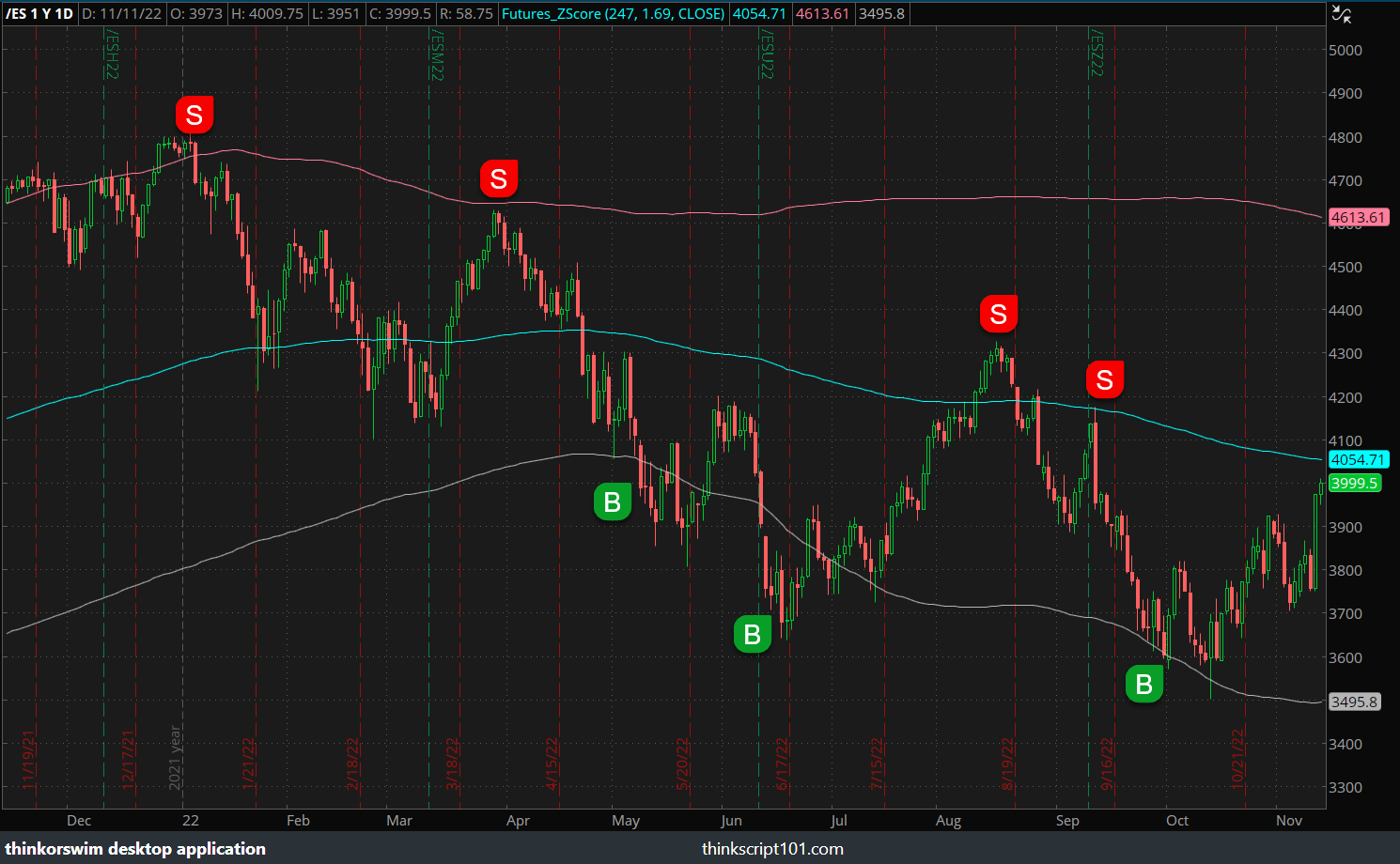Unlocking The Futures Game: Your Box Score To Market Insights
What Exactly Are Futures Contracts?
Why the "Futures Game.Box Score" Matters to Every Investor
Decoding the Key Players: Major Index Futures
Dow Jones Futures (YM=F): The Industrial Barometer
S&P 500 Futures: The Broad Market Pulse
Nasdaq Futures: The Tech-Driven Indicator
Global Events and Their Immediate Impact on Futures
Accessing Your "Futures Game.Box Score" Data
Tools for Analysis: Beyond Raw Data
Trading Strategies Informed by Futures Data
The Future of the "Futures Game.Box Score": Automation and AI
What Exactly Are Futures Contracts?
At its core, a futures contract is a legally binding agreement to buy or sell an asset at a predetermined price on a specified date in the future. While this might sound straightforward, the applications and implications are vast. Unlike buying a stock outright, which gives you immediate ownership, a futures contract is about locking in a price for a transaction that will occur later. This mechanism is crucial for hedging against price fluctuations and for speculative trading, allowing participants to bet on the future direction of an asset without owning the underlying asset itself. Futures trading commonly refers to futures whose underlying assets are securities in the stock market, but their reach extends far beyond. These contracts are based on the future value of an individual company’s stock, a basket of stocks (like an index), commodities such as crude oil or gold, or even currencies. For instance, an oil producer might sell futures contracts to lock in a price for their future output, ensuring revenue stability, while an airline might buy futures contracts to hedge against rising fuel costs. On the other hand, speculators, who don't intend to take physical delivery, use futures to profit from price movements, buying if they expect prices to rise and selling if they anticipate a fall. The transparency and liquidity of futures markets make them a cornerstone of modern finance, providing a crucial mechanism for price discovery and risk management across diverse asset classes.Why the "Futures Game.Box Score" Matters to Every Investor
Think of the "futures game.box score" as the market's early warning system. Before the opening bell rings on Wall Street, futures markets have often been active for hours, reflecting global sentiment and reacting to overnight news. This pre-market activity provides invaluable clues about how the main market indices are likely to open and what kind of day investors might expect. For anyone with capital in the market, whether they're a long-term investor or an active day trader, understanding this pre-market "box score" is non-negotiable. The ability to get the latest data from stocks futures of major world indexes offers a significant edge. It allows investors to gauge the collective mood of institutional players and large-scale traders who often move the needle. When you find updated quotes on top stock market index futures, you're not just seeing numbers; you're seeing the immediate reaction to economic reports, geopolitical tensions, and corporate announcements. This data helps in anticipating market gaps, identifying potential support or resistance levels, and adjusting strategies even before the traditional trading session begins. For example, a sharp rise in futures indicates strong positive sentiment, potentially signaling a bullish open, while a significant drop suggests widespread apprehension. This early insight from the "futures game.box score" can be the difference between making a timely decision and reacting too late to a developing trend.Decoding the Key Players: Major Index Futures
Just as a sports box score highlights the performance of star players, the "futures game.box score" zeroes in on the movements of major index futures. These are the bellwethers of the stock market, representing broad segments of the economy and providing a holistic view of investor confidence. Understanding the nuances of each major index future is essential for a comprehensive market outlook.Dow Jones Futures (YM=F): The Industrial Barometer
The Dow Jones Industrial Average (DJIA) is one of the oldest and most recognized stock market indices, representing 30 large, publicly traded U.S. companies. Its futures contract, often referred to as YM=F, serves as a crucial barometer for the overall health of the industrial and established corporate sectors. When you see headlines like "Futures attached to the Dow Jones Industrial Average (YM=F) jumped 0.6% while..." this indicates a significant positive sentiment among investors regarding these blue-chip companies. A strong performance in Dow Jones futures often suggests confidence in traditional economic growth and corporate stability. Conversely, a decline can signal concerns about the industrial output or the broader economy. Monitoring YM=F is vital for those tracking the performance of mature, large-cap companies that form the backbone of the U.S. economy.S&P 500 Futures: The Broad Market Pulse
The S&P 500 index, comprising 500 of the largest U.S. publicly traded companies, is widely considered the best gauge of large-cap U.S. equities and the overall health of the American stock market. Consequently, S&P 500 futures are arguably the most watched and liquid index futures contracts. Their movements provide a comprehensive pulse of the broader market, reflecting sentiment across diverse sectors. When reports state, "S&P 500 futures were up 42 points, or 0.7% while Dow Jones Industrial Average futures added 274 points, or 0.6%," it signifies a widespread positive outlook across a significant portion of the U.S. economy. The S&P 500 futures are also highly sensitive to shifts in market dynamics, as seen in phrases like "S&P 500 and Nasdaq futures set for volatile open as traders brace for sector rotations after Iran strike," indicating how geopolitical events can immediately translate into anticipated market volatility and strategic adjustments among traders.Nasdaq Futures: The Tech-Driven Indicator
The Nasdaq Composite and Nasdaq 100 indices are heavily weighted towards technology and growth companies. As such, Nasdaq futures serve as a key indicator for the performance of the tech sector, which has become an increasingly dominant force in the global economy. "Nasdaq Composite futures were up 1%" is a common sight when tech stocks are leading the charge, driven by innovation, strong earnings, or positive industry news. Given the significant influence of tech giants on overall market performance, the movements in Nasdaq futures are closely scrutinized by investors looking for insights into the growth segments of the market. Combined, Dow Jones futures, along with S&P 500 futures and Nasdaq 100 futures, traded higher ahead of Tuesday's open, indicating a broad-based positive sentiment across different market segments, providing a comprehensive "futures game.box score" for the upcoming trading day.Global Events and Their Immediate Impact on Futures
The financial markets are incredibly interconnected, and nowhere is this more evident than in the immediate reaction of futures to global events. Unlike the main stock exchanges, which have fixed trading hours, futures markets often operate nearly 24 hours a day, allowing them to instantly price in news and developments from around the world. This makes them a real-time barometer for how major events are shaping investor sentiment. Consider the swift response to geopolitical developments. "US stock futures rose after President Trump announced a ceasefire between Israel and Iran." This single sentence perfectly illustrates the sensitivity of futures markets. A de-escalation of conflict, even in a distant region, can immediately alleviate investor anxiety, leading to a surge in futures as market participants anticipate a more stable environment. Conversely, heightened tensions can send futures plummeting. Beyond geopolitical news, economic data releases, central bank announcements, and even natural disasters can have an instant and profound effect. For instance, "Brent crude may approach $90 if Iran supply drops" highlights how supply-side shocks or political instability in major oil-producing regions can directly impact commodity futures, which then ripple through the broader economy. The stock market rallied Monday, as Wall Street digested the latest news, often reflecting the initial sentiment already established in the futures market. This dynamic underscores why monitoring the "futures game.box score" is crucial for understanding how global narratives are translated into market movements.Accessing Your "Futures Game.Box Score" Data
To truly leverage the insights offered by the "futures game.box score," you need to know where to find reliable, real-time data. Fortunately, a wealth of resources is available, catering to different levels of detail and analytical needs. The most common places to find this critical information are reputable financial news websites, specialized data providers, and brokerage platforms. Many platforms offer premarket quotes for relevant stock market futures, including Dow Jones futures, Nasdaq futures, and S&P 500 futures, alongside world markets indices, commodities, and currencies. These platforms often provide live streaming data, allowing you to track movements second by second. For a comprehensive overview, you can view the MarketWatch summary of futures, which typically includes not only index futures but also news, energy & metals, and agriculture futures, giving you a holistic view of global market sentiment. Accessing this data before the market opens is essential for traders looking to formulate their strategies and for investors who want to understand the potential direction of their portfolios.Tools for Analysis: Beyond Raw Data
Simply looking at raw futures quotes is a good start, but to truly interpret the "futures game.box score," you need analytical tools. Many financial platforms offer sophisticated features like a stock screener for investors and traders, which can filter futures contracts based on specific criteria. Furthermore, financial visualizations, such as candlestick charts, volume profiles, and heat maps, transform raw data into easily digestible insights. These tools help identify trends, support and resistance levels, and potential entry or exit points. For instance, seeing a large volume of futures trading at a specific price level can indicate strong institutional interest, providing a deeper understanding of the market's underlying dynamics. Leveraging these analytical tools turns the "futures game.box score" from a mere collection of numbers into a powerful strategic asset.Trading Strategies Informed by Futures Data
For active traders and institutional investors, the "futures game.box score" is not just a curiosity; it's a fundamental input for their daily trading strategies. The insights derived from futures data allow for proactive positioning, risk management, and the identification of high-probability trading opportunities. One of the primary uses is anticipating market opens. If S&P 500 futures are significantly up or down before the market opens, traders can adjust their pre-market orders or prepare for a strong directional move at the open. For example, at 8:15 EDT, S&P 500 futures were up 42 points, or 0.7% while Dow Jones Industrial Average futures added 274 points, or 0.6%, and Nasdaq Composite futures were up 1%. Such data points provide a clear signal of bullish sentiment across the board, guiding traders to look for long opportunities. Beyond simple direction, futures data helps in understanding market volatility. When S&P 500 and Nasdaq futures are set for a volatile open as traders brace for sector rotations after an event like an Iran strike, it signals a need for caution and potentially a shift in focus from broad market trends to specific sector performance. Traders might use this information to reduce exposure to vulnerable sectors or increase positions in those expected to benefit. Furthermore, futures data is crucial for risk management. By observing how futures react to news, traders can quickly adjust their positions to mitigate potential losses or lock in profits. This real-time feedback loop, provided by the "futures game.box score," allows for dynamic decision-making, which is critical in fast-moving markets. It informs strategies ranging from simple directional bets to complex arbitrage and hedging techniques, making it an indispensable tool for anyone actively engaged in the markets.The Future of the "Futures Game.Box Score": Automation and AI
The landscape of financial data analysis is constantly evolving, and the "futures game.box score" is no exception. As technology advances, the way we access, interpret, and act upon futures data is undergoing a significant transformation, driven largely by automation and artificial intelligence (AI). What once required manual tracking and human interpretation is increasingly being handled by sophisticated algorithms. AI and machine learning models are now capable of processing vast quantities of futures data in real-time, identifying patterns and correlations that might be imperceptible to the human eye. These systems can quickly analyze the impact of news events on futures prices, predict short-term movements with higher accuracy, and even execute trades autonomously based on predefined parameters. Automated trading systems, powered by these advanced analytics, can react to changes in the "futures game.box score" in milliseconds, capitalizing on fleeting opportunities. This not only enhances efficiency but also democratizes access to complex analytical capabilities that were once exclusive to large institutional players. As AI continues to mature, we can expect even more personalized and predictive insights from the "futures game.box score," allowing investors and traders to make even more informed and timely decisions in the ever-dynamic global markets.Conclusion
The "futures game.box score" is far more than just a collection of numbers; it's a dynamic, real-time narrative of global market sentiment and anticipated movements. From the immediate reactions of Dow Jones futures to geopolitical shifts to the broad market pulse reflected in S&P 500 futures, understanding this pre-market data is fundamental for anyone looking to gain an edge in the financial world. It provides crucial insights into potential market openings, volatility, and the underlying strength or weakness across various sectors, making it an indispensable tool for both seasoned traders and long-term investors. By consistently monitoring top stock market index futures, leveraging analytical tools, and staying informed about global events, you can effectively decode the "futures game.box score" and use it to inform your investment decisions, manage risk, and identify opportunities. The ability to anticipate market trends, rather than merely react to them, is a powerful advantage in today's fast-paced financial landscape. What are your thoughts on using futures data to inform your trading decisions? Share your insights in the comments below! If you found this guide to the "futures game.box score" insightful, consider exploring our other articles on market analysis and trading strategies to further enhance your financial literacy.- Autumren Lesbian
- Brandyandbilly Onlyfans Leak
- %E5%A6%BB%E5%AD%90 %E5%88%86%E4%BA%AB
- Iam 751
- Cnn Sara Murray

Futures Z-Score Indicator for ThinkorSwim - thinkScript101

Mlb Futures Game 2024 Box Score - Alice Brandice

Mlb Futures Game 2024 Box Score - Alice Brandice